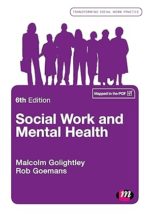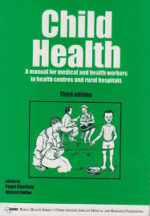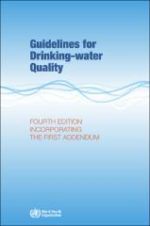The Biological Basis of Human Behavior accomplishes what numerous introductory books have failed to do: present an evolutionary explanation of why it is we do what we do. This comprehensive book brings together a diverse number of traditionally separate disciplines including paleoanthropology, psychology, and sociology in its attempt to understand human traits. Rich in controversial topics, this text integrates subjects such as paleontology, speech, the structure of the brain, Eve, and the rather odd way in which humans reproduce. Written as a narrative, this excellent learning tool relates modern behavior to the past environments, stresses, and challenges still evident in the modern human world. For anyone interested in the biological bases of human behavior; psychology; or anthropology.
Biological Bases of Human Behavior, The 1st Edition
KSh 7,420.00
The Biological Basis of Human Behavior accomplishes what numerous introductory books have failed to do: present an evolutionary explanation of why it is we do what we do. This comprehensive book brings together a diverse number of traditionally separate disciplines including paleoanthropology, psychology, and sociology in its attempt to understand human traits. Rich in controversial topics, this text integrates subjects such as paleontology, speech, the structure of the brain, Eve, and the rather odd way in which humans reproduce. Written as a narrative, this excellent learning tool relates modern behavior to the past environments, stresses, and challenges still evident in the modern human world. For anyone interested in the biological bases of human behavior; psychology; or anthropology.
1 in stock
Related products
-
Social Work and Mental Health (Transforming Social Work Practice Series)
With 1 in 4 people experiencing a mental health problem in any given year, mental health is a more important part of social work training than ever before, and all successful social workers need to understand the core values, skills and knowledge that underpin excellent practice in a modern mental health system.
Written as an accessible introduction to the complex issues around mental health, this book has become a classic in its field. Law and policy are clearly outlined while the authors give space to important ethical considerations when working with the most vulnerable in society. There are clear links between policy, legislation and real life practice as well as a wealth of learning features.
-
-
Guidelines for drinking-water quality, 4th edition, incorporating the 1st addendum
The fourth edition of the World Health Organization’s (WHO) Guidelines for drinking-water quality (GDWQ) builds on over 50 years of guidance by WHO on drinking-water quality, which has formed an authoritative basis for the setting of national regulations and standards for water safety in support of public health.
It is the product of significant revisions to clarify and elaborate on ways of implementing its recommendations of contextual hazard identification and risk management, through the establishment of health-based targets, catchment-to-consumer water safety plans and independent surveillance.
This first addendum updates the fourth edition. Updates reflect new evidence and further, provides additional explanations to support better understanding and application of the guidance.
-
Maitland’s Vertebral Manipulation, 8th Edition Management of Neuromusculoskeletal Disorders – Volume 1
KSh 21,840.00The legacy of Geoff Maitland and his seminal work, Vertebral Manipulation, continues in this eighth edition, with Elly Hengeveld and Kevin Banks leading an international team of experts who demonstrate how to manage vertebral neuromusculoskeletal disorders using the principles and practice of the Maitland Concept. Together, they ensure the heart of the Concept beats on by promoting collaborative decision-making with the patient at centre and emphasizing the art and science of observation, listening, palpation and movement skills.
A key feature of the new edition focuses on a more evidence-based and analytical view of the role of mobilization and manipulation in clinical practice The authors have written in a way that reflects their application of the Maitland Concept and how they have integrated techniques in the light of advancement in professional knowledge. Each chapter stands alone as a ‘master class’.
The text is systematically arranged focusing on detailed assessment, clinical reasoning and re-assessment to determine the physical dysfunction and efficacy of manipulative physiotherapy techniques, while also advocating continuous communication and interaction. Techniques of passive mobilization are also described, specifically designed around the individual patient’s condition.
All the chapters are written from a clinical perspective and review the evidence which informs how to deal with and manage spinal and pelvic pain as they present to the practitioner. Furthermore, each vertebral region (cervical, thoracic, lumbar, sacroiliac/pelvic) is considered from the point of view of best practice in analysing and hypothesising subjective data, examination, treatment and management of spinal pain conditions.
Brand new to the eighth edition is the addition of a companion website – Maitland’s Manipulation eResources (www.maitlandsresources.com) – providing access to a range of valuable learning materials which include videos, MCQs, interactive case studies, research links, and bonus chapters
“This text would be an excellent resource to any practising physiotherapist or health professional dealing with spinal disorders. It would enhance the manual skills and clinical reasoning of any therapist regardless of their experience. It is concise, clear to follow and covers each spinal section extensively with evidence-based practise and thought stimulating case studies and examples throughout.” Reviewed by: Tracy Ward, MCSP, BSc (HONS), MSc, Senior Physiotherapist and Clinical Pilates Specialist, BMI Healthcare Albyn Hospital, Aberdeen, Date: Oct 14
“Drawing on a wide spectrum of literature and expert guest authors to explain the reasoning behind treatment techniques this edition takes the reader on a wonderful clinical journey way beyond the Maitland concept.” Reviewed by: Tobias Bremer Date: 24/07/2014
-
ICD-10 Volume 2: International Statistical Classification of Diseases and Related Health Problems : Instruction Manual
This first volume contains the classification at the three and four-character levels, the classification of the morphology of neoplasms, special tabulation lists for mortality and morbidity, definitions, and the nomenclature regulations. The volume also reproduces the report of the International Conference, which indicates the many complex consideration behind these revisions.
-
Understanding Psychology
KSh 9,525.00The overall philosophy of Understanding Psychology is to bring complex psychological concepts to students’ lives. The goal of this program is to make psychology relevant, fun, interesting, and even exciting, making it approachable. Understanding Psychology is an interactive book with:
- hands-on activities
- case studies
- current issues and readings about the field of psychology
The Understanding Psychology program was designed to help students understand how this subject is part of their day-to-day lives. Research in assessment and APA literature was reviewed. The program’s authors, academic consultants, and experienced Social Studies educators reviewed the assessment plan for Understanding Psychology. Understanding Psychology includes a variety of assessment instruments to support instruction. The test booklet provides three-part chapter tests: Matching, Multiple Choice, and Essay”
-
Food Safety and Inspection An Introduction
KSh 7,000.00The process of food inspection relies on an inspector’s understanding of the intrinsic hazards associated with individual foods. Whereas spoilage can usually be determined through a simple organoleptic assessment, the judgment of whether a food is fit for human consumption requires an evaluation of health hazards, many of which may not be apparent through physical assessment. Instead the inspector must analyse and integrate scientific and handling information to evaluate the potential health risk. Adulteration of foods is also becoming an increasing problem, and the complexity of the food supply chain requires an understanding of risk points to allow targeted inspection and assessment.
Food Safety and Inspection: An Introduction focuses on food categories and describes common hazards associated with each, using published peer-reviewed research to explain and evaluate the health risk. It is a practical textbook designed to support the role of food inspection in a modern food industry. There are seven chapters looking at specific aspects of food safety, including a chapter on fraud and adulteration.
This book summarises relevant published research to provide a scientific context for specific food safety issues, and is an essential read for anyone interested in becoming a food inspector.
-
Health Behavior: Theory, Research, and Practice (Jossey-Bass Public Health)
The essential health behavior text, updated with the latest theories, research, and issues
Health Behavior: Theory, Research and Practice provides a thorough introduction to understanding and changing health behavior, core tenets of the public health role. Covering theory, applications, and research, this comprehensive book has become the gold standard of health behavior texts. This new fifth edition has been updated to reflect the most recent changes in the public health field with a focus on health behavior, including coverage of the intersection of health and community, culture, and communication, with detailed explanations of both established and emerging theories. Offering perspective applicable at the individual, interpersonal, group, and community levels, this essential guide provides the most complete coverage of the field to give public health students and practitioners an authoritative reference for both the theoretical and practical aspects of health behavior.A deep understanding of human behaviors is essential for effective public health and health care management. This guide provides the most complete, up-to-date information in the field, to give you a real-world understanding and the background knowledge to apply it successfully.
Learn how e-health and social media factor into health communication
Explore the link between culture and health, and the importance of community
Get up to date on emerging theories of health behavior and their applications
Examine the push toward evidence-based interventions, and global applications
Written and edited by the leading health and social behavior theorists and researchers, Health Behavior: Theory, Research and Practice provides the information and real-world perspective that builds a solid understanding of how to analyze and improve health behaviors and health










Be the first to review “Biological Bases of Human Behavior, The 1st Edition”